Wildflowers, Grasses and Other Nonwoody Plants
Media
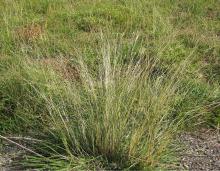
Species Types
Scientific Name
Bothriochloa ischaemum
Description
Yellow bluestem is a nonnative, aggressive, weedy degrader of pasturelands that escapes cultivation and endangers native habitats. It blooms in Missouri in late June to July, far earlier than our native bluestems.
Media

Species Types
Scientific Name
Blephilia ciliata
Description
Square, unbranching stems, opposite leaves, two-lipped flowers, and a mild minty fragrance are clues Ohio horsemint is in the mint family. Tight, rounded flower clusters are stacked atop one another at the stem tips.
Media
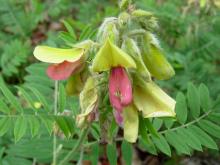
Species Types
Scientific Name
Tephrosia virginiana
Description
Two-colored flowers of pink and light yellow make goat's rue easy to identify. Look for this legume in rocky, open woods, savannas, prairies, glades, and fields.
Media
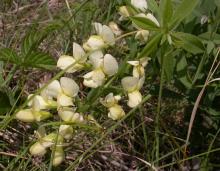
Species Types
Scientific Name
Baptisia bracteata (formerly B. leucophaea)
Description
Long-bracted wild indigo flowers April–June, while the surrounding vegetation is still short. Its racemes of creamy-white pea flowers mature into oval pods with tapering beaks.
Media

Species Types
Scientific Name
Scutellaria incana
Description
Showy clusters of blue-violet, two-lipped flowers adorn downy skullcap. This native mint is found mostly in the southern half of the state.
Media
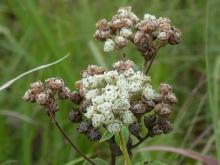
Species Types
Scientific Name
Parthenium integrifolium
Description
A common component of high-quality upland prairie, American feverfew, or wild quinine, is a native wildflower that was used to treat fevers or malaria. It's in the composite family.
Media

Species Types
Scientific Name
Gillenia stipulata
Description
Indian physic, or American ipecac, is a leafy plant that can cover entire hills in the Ozarks. Native Americans used it as an emetic for internal cleansing, a widespread ceremonial custom.
Media
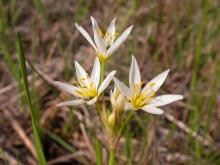
Species Types
Scientific Name
Nothoscordum bivalve
Description
False garlic looks like a wild garlic or onion plant, but it doesn’t smell like one. The flowers can be white, yellowish, or greenish, and they appear in spring and sometimes also fall.
Media

Species Types
Scientific Name
Antennaria parlinii
Description
Plainleaf pussytoes, named for its fuzzy flower heads, is one of the few flowering plants in Missouri that grows well in dry and shaded areas. It’s also an indicator of acid soils.
Media

Species Types
Scientific Name
Valerianella radiata
Description
At first glance, you might overlook corn salad, except for the large colonies it often forms. The young leaves can be eaten as a salad green, hence the name.
See Also
About Wildflowers, Grasses and Other Nonwoody Plants in Missouri
A very simple way of thinking about the green world is to divide the vascular plants into two groups: woody and nonwoody (or herbaceous). But this is an artificial division; many plant families include some species that are woody and some that are not. The diversity of nonwoody vascular plants is staggering! Think of all the ferns, grasses, sedges, lilies, peas, sunflowers, nightshades, milkweeds, mustards, mints, and mallows — weeds and wildflowers — and many more!





















